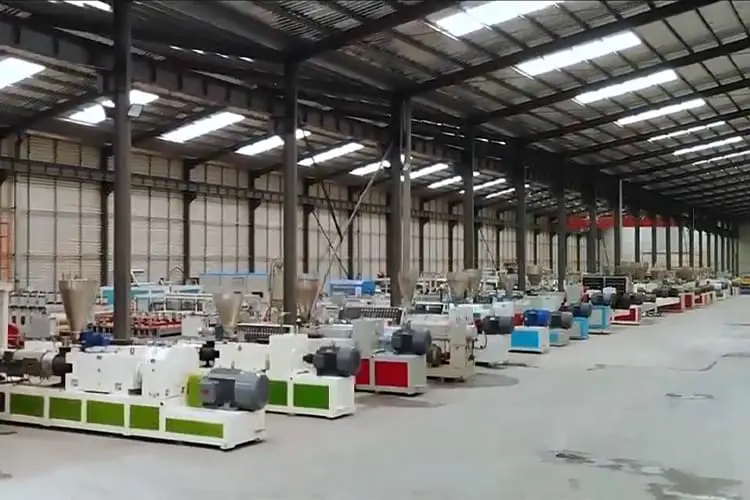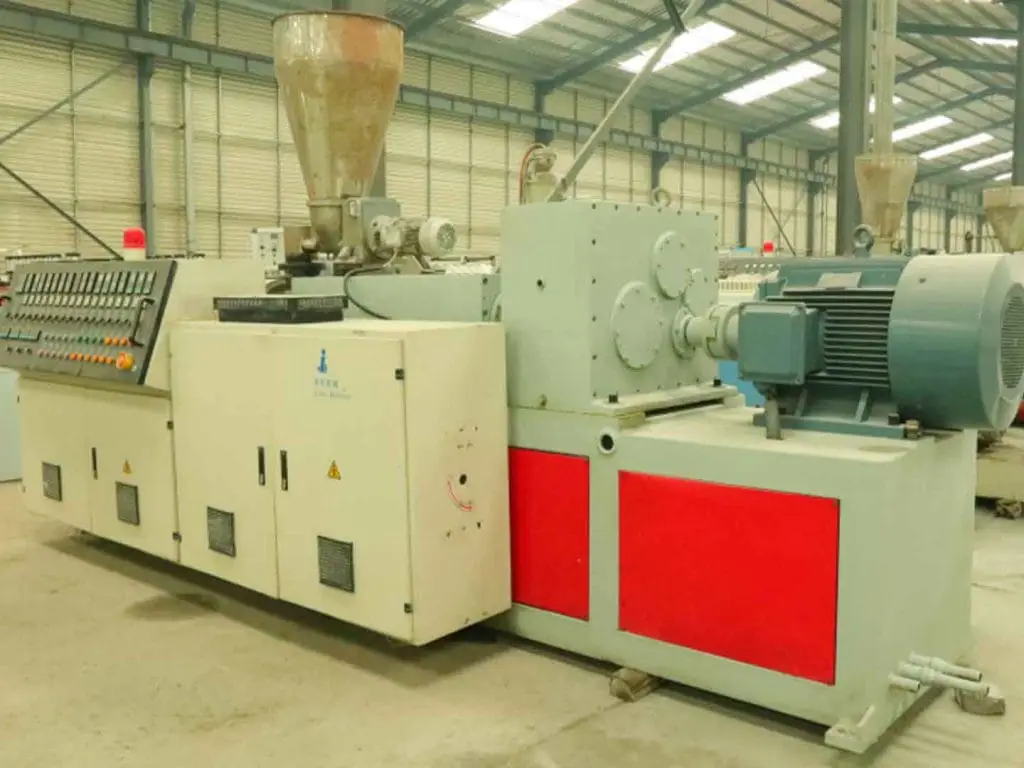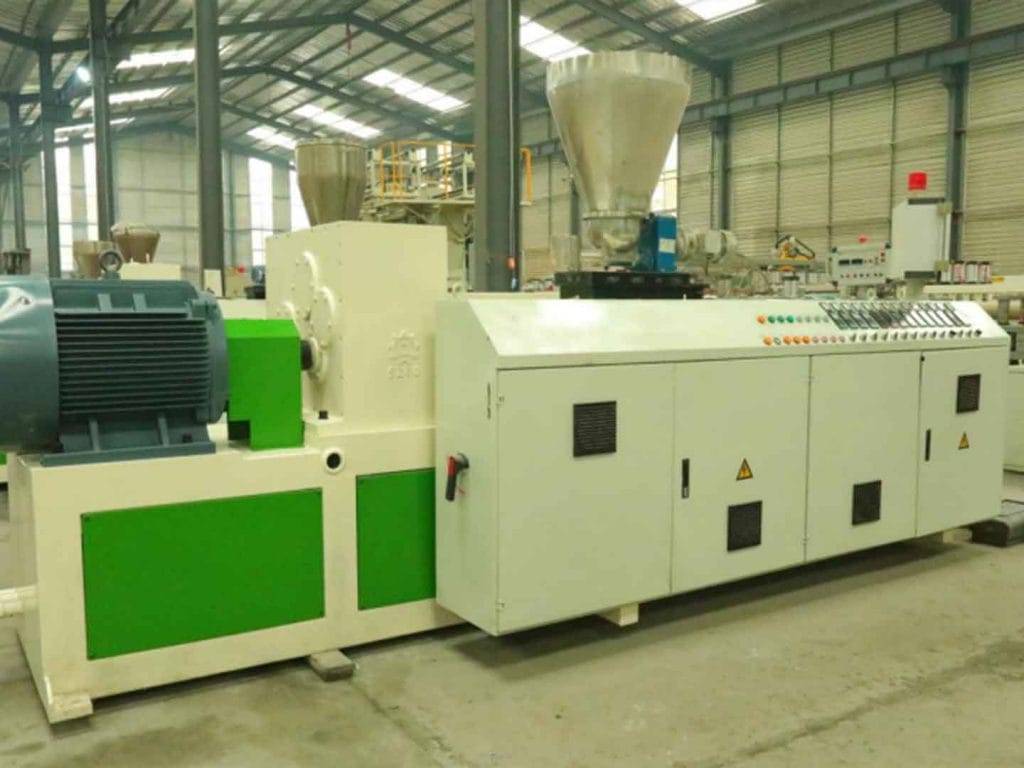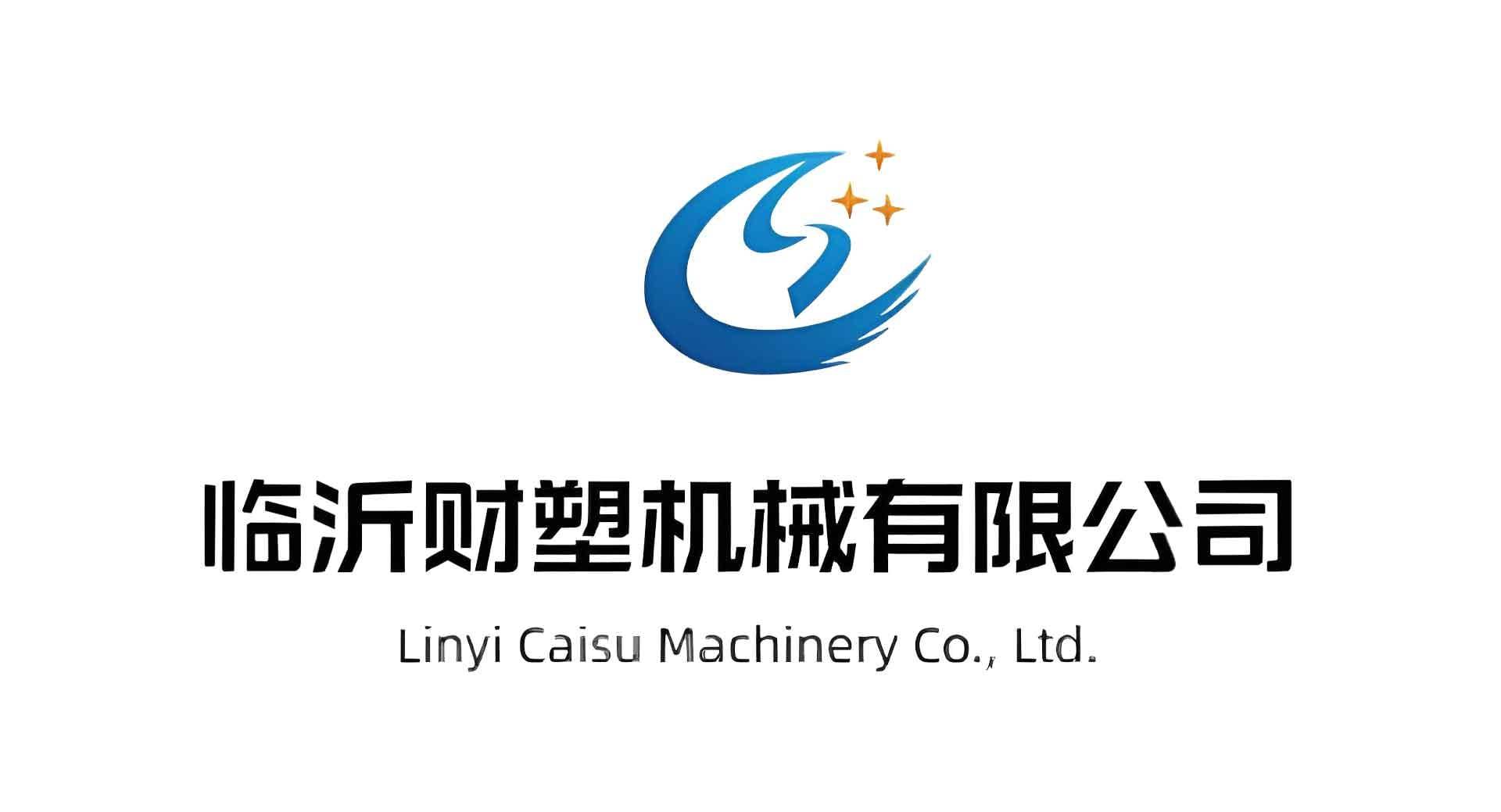Welcome to My Blog!
Before we dive into the content, I’d love for you to join me on my social media platforms where I share more insights, engage with the community, and post updates. Here’s how you can connect with me:
Facebook:https://www.facebook.com/profile.php?id=61567891941530
Now, let’s get started on our journey together. I hope you find the content here insightful, engaging, and valuable.
Caisu Machinery sells a variety of used plastic pipe production equipment. The products are of high quality and low price. Welcome to contact us for consultation and purchase. We will be happy to serve you.
Table of Contents
Introduction
Looking to ramp up window and door frame manufacturing without breaking the bank? A pvc frame profile production line can dramatically improve efficiency, reduce waste, and deliver consistent quality. Whether you’re working with brand-new or carefully refurbished equipment, optimizing production means faster turnaround, less downtime, and stronger profits. Let’s explore how to unlock that potential—especially when choosing second-hand systems from reliable suppliers like Caisu.

What is a pvc frame profile production line?
A pvc frame profile production line is a dedicated manufacturing setup designed to produce window or door frame profiles from PVC resin. Core components of the line typically include:
- Twin-screw extruder for melting and mixing resin
- Custom die and calibrator for precise profile shaping
- Haul-off unit and trimming saw for accurate cutting
- Cooling tanks and stacking tables for quality control
When configured correctly, this line can turn raw PVC material into finished frame profiles in a single, continuous process. And when executed on high-quality second-hand equipment, you get impressive performance at lower investment.
Advantages of second-hand lines
Opting for a second-hand pvc frame profile production line keeps your capital expenditure in check while often offering:
- Well-maintained, tested machinery with reliable performance
- Significant savings compared to new lines—often 40–60% less in upfront cost
- Faster lead times—no waiting months for build and shipping
- Environmentally responsible reuse of industrial equipment
Key components and how they enhance efficiency
Twin-screw extruder
This is the heart of the pvc frame profile production line. With co-rotating twin-screw designs, you achieve efficient melting, homogenization of resin and additives, and gentle degassing for bubble-free profiles.
Longer screws improve mixing, but consume more energy—aim for a balance suitable for frame profile output.
Profile shaping and calibration
Custom die heads matched to your frame design ensure consistent cross-sections. The calibration unit rapidly cools the hot PVC, fixing the shape and thickness.
Accurate calibration reduces scrap rates dramatically. Brands consistently report scrap reduction of 20–30% through precise die-to-calibrator alignment.
Haul-off, cutting, and stacking
Pulling speed controls final profile dimensions. A quality pvc frame profile production line includes synchronized pullers and a precision saw to cut profiles to spec.
Stacking tables, optional marking, and automated conveyors keep profiles organized, speeding post-production handling.
Support systems and automation
A robust line includes:
- Melt pressure and temperature sensors for process control
- PLC systems enabling recipe storage and fault diagnostics
- Servo-driven haul-off for speed accuracy
- Touch-screen HMI allowing easy monitoring and adjustment
Good automation minimizes waste and ensures repeatable product quality.
Mid-article table: line configuration and specs
| Process Stage | Typical Setup | Production Benefit |
|---|---|---|
| Extruder | Twin-screw, 55–90 mm dia., 25–40 L/D ratio | Stable melt, consistent mixing, low defects |
| Die & calibrator | Custom tools + water-cooled calibration table | Accurate dimensions, less scrap |
| Haul-off & cutting | 4–6 clamp puller + precision saw | Uniform lengths, clean finishes |
| Automation | PLC + sensors + servo drives | Reduced downtime, recipe control |
| Cooling & stacking | Multi-stage bath + stacker table | Faster cycle, better product handling |
This configuration aligns with manufacturers reporting 20–30% productivity gains compared to older basic setups.
Why choose a second-hand pvc frame profile production line?
Cost savings
A well-maintained used line can cost up to half of a new one. Even with minor refurbishing, ROI can happen in under two years through savings on parts and depreciation.
Reliability and availability
Many reused lines come from European or other industrial manufacturers, well cared-for with available spare parts. This ensures dependable performance.
Faster deployment
New lines can take 6–9 months to manufacture and ship. Second-hand units can be inspected, prepped, and shipped—ready for installation within weeks.
Sustainability
Reusing high-quality equipment cuts down on the environmental footprint of new machinery manufacturing.
Proven performance
Successful export histories and established field use offer confidence that your purchased line is production-tested and field-proven.
Optimizing production line usage

Choose the right screw profile
Profile elements influence melting speed, torque, and output. Co-rotating twin-screw systems with WPH or segmented screws allow customization for resin types.
Master calibration tuning
Water temperature control, precise vacuum tubing, and dimension monitoring during startup minimize sagging and tolerances.
Balanced haul-off and cutting
Matching puller speed to melt output and using chilled saw blades reduces burrs, ensuring high first-pass yields.
Keep up with preventive maintenance
Replace wear parts before failure—screws, liners, bearings, seals. Keep hydraulic oil and coolant in spec. That way the second-hand line delivers new-line performance.
Integrate lean practices
Standardize resin blends per recipe; log production metrics; optimize cycle time; minimize changeover delays between frame styles.
Real-world efficiency stories
One southern producer installed a carefully overhauled second-hand line, adding a customized die. They reported:
- 25% faster startup times compared to their old line
- Scrap rates under 3%, down from 8% previously
- Complete ROI in 18 months, thanks to equipment savings and higher output
Another midsize window frame factory used servo haul-off upgrades to cut cycle times by 15%, boosting throughput by one shift per week.
Considerations when buying second-hand equipment

Thorough inspection
Verify gearbox condition, screw wear, barrel scans, hydraulic systems, PLCs, and safety systems.
Documentation
Ensure traceability of electrical specs, machine history, operator manuals, and wiring diagrams.
Support and spare parts
Check for parts availability—gearboxes, drives, control modules. Consider stocking wear parts upon purchase.
Customization and upgrades
Consider improved screw profiles, upgraded calibrators, or added automation. Modernizing second-hand lines maintains cost-effectiveness.
Logistics and setup
Ensure shipping, customs, installation, commissioning, and training support is part of the purchase package.
Maintenance and lifecycle strategy
- Schedule greasing, clean coolant lines, and replace seals quarterly
- Conduct annual gearbox oil change and hydraulic filter swaps
- Use non-contaminated lubricant; avoid mixing fluids
- Track production hours and monitor wear components
A proactive maintenance plan keeps second-hand lines running smoothly for years.
Future-proofing your production
- Consider modular framing to add lines as demand grows
- Track energy usage—older motors may use more power per ton
- Plan for resin changes—PVC profiles are now made with recycled or bio-resin blends
- Think ahead on finishing—profile coating or joint punching may be fit later
Strategic planning ensures your line remains productive and adaptable.
Conclusion
Whether you’re upgrading or starting anew, choose equipment wisely, optimize process parameters, and maintain systems diligently. With that, your factory will run smoother, produce better products, and keep your business agile.
Ready to unlock efficiency with a high-quality second-hand pvc frame profile production line? Contact Caisu today to explore inventory, customize your line, and get expert support—from inspection to commissioning.
FAQ
Is a second-hand line reliable?
Yes—when properly inspected, refurbished, and maintained, second-hand lines can match new-line performance and come with fully supported parts and service.
What capacity can I expect?
A typical used line rated at 200–300 kg/hr can run profiles 60–90 mm wide, perfect for standard window frames.
How much can I save?
Initial investments can be 40–60% lower than new. Combined with lower depreciation, ROI often occurs within 1–2 years.
Can I produce different profile shapes?
Absolutely—custom dies enable a range of frame designs. Some lines support quick-change die systems for added flexibility.
What maintenance is needed?
Routine checks include screw/wear lining, hydraulic/tank servicing, calibration alignment, and part replacements. Minor wear items are inexpensive and easily sourced.
Does Caisu provide support after sale?
Yes—we offer full technical support, spare parts guidance, logistics coordination, operator training, and remote assistance to ensure smooth startup and lasting efficiency.





